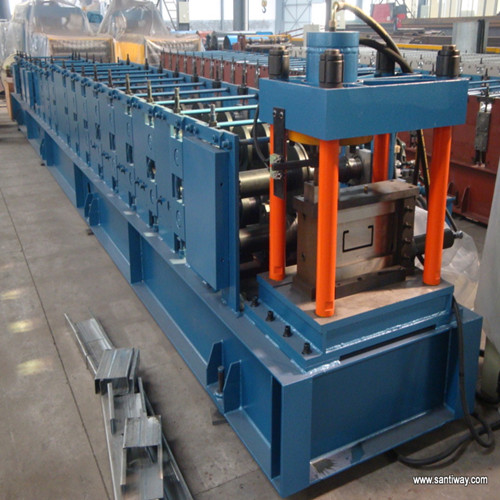
The Rack Upright Roll Forming Machine A Key Player in Modern Manufacturing
In the ever-evolving landscape of manufacturing and industrial processes, certain machines stand out for their specialized capabilities. One such machine is the rack upright roll forming machine, an essential tool primarily used in the production of metal racks, shelving systems, and various structural components.
Understanding Roll Forming
Roll forming is a high-volume process that involves feeding metal sheets through a series of rollers to form them into specific shapes. Unlike traditional methods such as stamping or punching, roll forming allows for continuous production with minimal waste. The primary advantage of this technique is its ability to produce complex, uniform sections at a rapid pace, making it ideal for manufacturers looking to optimize efficiency and output.
The Role of Rack Upright Roll Forming Machines
The rack upright roll forming machine is designed specifically to create upright sections that are pivotal in the construction of storage racks. These machines are capable of transforming flat metal sheets into precisely shaped upright frames that serve as the backbone for various types of racks, including pallet racks, cantilever racks, and storage systems.
These machines are characterized by their capability to handle various materials, primarily steel and aluminum, and can produce components in a wide range of sizes and thicknesses according to specific requirements. The versatility of rack upright roll forming machines aligns perfectly with the diverse needs of modern warehouses and retail environments, further amplifying their significance in the manufacturing sector.
Key Features and Benefits
1. High Efficiency One of the primary benefits of using rack upright roll forming machines is their efficiency. These machines can operate at high speeds, producing continuous sections of rack uprights without the need for frequent setup changes. This leads to reduced production times and increased output.

2. Precision and Consistency Roll forming ensures that each upright produced is uniform in shape and size, which is crucial for the integrity of racking systems. The machines are equipped with advanced control systems that allow for precise adjustments, resulting in a high-quality finished product.
3. Cost-Effectiveness By minimizing material waste and lowering labor costs, rack upright roll forming machines prove to be a cost-effective solution for manufacturers. The long-term savings generated from reduced waste and increased production efficiency can significantly enhance profitability.
4. Flexibility These machines can adapt to produce various designs and profiles without extensive downtime. This flexibility enables manufacturers to respond swiftly to changing market demands or switch between different production runs with ease.
5. Durability and Strength The nature of the roll forming process enhances the strength of the produced components. The continuous grain structure of the metal is preserved, leading to a more durable product capable of withstanding heavy loads and adverse conditions.
Applications in Various Industries
The applications of rack upright roll forming machines extend across a multitude of industries. From logistics and distribution centers requiring robust shelving systems to retail spaces needing efficient product displays, the demand for sturdy and reliable racks is ubiquitous. Additionally, these machines play a significant role in the automotive industry, where they are used to create structural components for vehicles.
Conclusion
As industries strive for greater efficiency and cost-effectiveness, the importance of specialized machinery like the rack upright roll forming machine cannot be overstated. This technology not only enhances productivity but also provides manufacturers with the flexibility and precision needed to meet the demands of a competitive market. With ongoing advancements in roll forming technology, the future looks promising for manufacturers utilizing these machines, positioning themselves at the forefront of modern manufacturing practices.